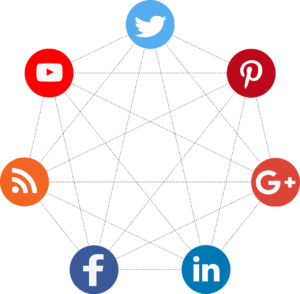
Surveys take buy-in, preparation time, resource and much effort. That last factor is typically a sticking point. Survey chatbots work better in many scenarios.
The amount of effort it takes to garner feedback in proportion to the amount of surveys answered is key to any survey objective. Businesses use all sorts of tactics to get the engagement results they statistically need for a proper cross-section and understanding.
First, online surveys have increased in popularity, and they are a much better route for businesses of all sizes and sectors.
Survey Chatbots work. More people engage because they find it easier to engage. Here’s how to use chatbots for surveys to garner higher engagement.
Survey Chatbots work. More people engage because they find it easier to engage.Here’s how to use chatbots for surveys to garner higher engagement.
To Survey or Not to Survey” (with Chatbots)
The point of any survey is to use the data you gather to provide better service or a better product. Surveys go straight to the source–your valued customer, audience or visitor, to harness the best results. Like a good investigator, your business uses both clues (data from across metrics) as well as well-prepared interviewing practices, to solve a problem or question.
Chances are, at some point your business has used at least one of these surveys:
Experience Feedback Surveys:
These are as simple as rating a business by a star system to manage and improve quality. Consumers are accustomed to these types of requests for quick purchases, such as a cup of coffee, or any less expensive retail transaction.
The more expensive and involved the purchase or service, the more customers have come to expect a survey format that allows them to share why they’ve rated a business the way they have.
Relational Surveys:
Relational surveys are for developing more satisfying one-on-one customer service typically within the context of human interaction, though not always. A “How are we doing?” survey is typical at the end of a phone call or chat with a customer service representative, whether for a utility company, financial institution or retail business.
Improvement Surveys:
Many times, these kinds of services are wrapped within a relational survey. They engender feedback on how a customer views your brand, how an employee views their experience and are usually more culture-driven in focus than product or service-focused. For internal use, these surveys help to reveal employer-employee disconnects in communication, systems and in satisfaction levels.
The point for any of these surveys is to uncover information that only your customer, visitor or user can provide. For instance, product or service lag behind a competitor’s signals that a survey either needs to be employed (or re-designed) to identify a problem. So how and when is it best to employ a survey chatbot?
Research shows that about 70 percent of customers prefer interacting with a chatbot for quick communication with brands. Likewise, research also shows that the best practice for higher engagement is to make surveys as brief as possible. Chatbot surveys fulfill that need, too. So should you just go ahead and create a chatbot for all of these survey types? Not necessarily.

There are times when consumers need a different approach for better engagement:
- A simple star rating system upon completing an in-store transaction. You don’t need a chatbot conversation for a one-step review. A coffee shop, fast food chain or hotel check-out might include a simple survey that includes one question: You want to know if a consumer would return, was satisfied with their immediate service or liked the overall experience.
- Switching the approach, language or experience in the middle of a survey campaign. In other words, if you’ve used the same approach, such as the way you’re delivering it (email or mail, for example), changing the response options, or changing the timing can have a negative effect. That might sound unwise, and like something you’d never do. Then again, it’s hard not to make tweaks if you’re trying to glean certain information and believe changing the way you phrase a question will be more effective. But this change has an impact on the data and it’s best not to make these changes if you want to compare this data down the line.
- A survey for poor service or experience. If the singular reason for the survey is to fact find about poor experience, the human element may be a better approach.
Subscribe to our Newsletter
Use a Chatbot Survey for These Reasons:
1. Chatbot Surveys Curb Survey Time
A best practice on surveys is that they should take no more than “12 to 15 minutes to complete.” But this time frame is also long, particularly when the experience can take one to two minutes in a quick-paced chatbot conversation. Not to mention, that’s a value drain that almost no customer wants to engage in.
2. Chatbot Surveys are More Efficient
The format is easier to engage with for any visitor. Instead of multi-screen questions, long-winded robo-calls or live calls, or sending back a mailer, chatbot surveys allow the survey taker more leverage in what and how they want to answer something. Of course, this depends on how you design it. But offering a response option for input as well as button options is a way to gain better insight.
3. Chatbot Surveys are Easier to Analyze
Surveys are a crucial fact-finding resource. Per Gartner, the majority of CEOs are eyeing digital transformation as a high priority along with business growth. Historically, surveys greatly reduce risk factors connected with product launches, for example, where there’s about 120 decisions with multiple variables, for a brand to launch a product, notes Harvard Business School.
So let’s say you want to understand how a loyal customer base will respond to a change in a favorite product. A chatbot survey can conversationally guide the user to give feedback on what they love about a product, how they’d feel about the change and what changes you might not have anticipated. By using both buttons and designing the experience with room for customer input, you can analyze guided feedback, as well as language patterns where certain words or phrases crop up. Not only that, but intelligent chatbots can be designed to pick up on some of these anticipated phrases, or even be designed to simply signal if there’s a pattern in phrasing or context. What’s more, smart chatbots can even be updated to begin to respond contextually to those signals.
Why Chatbot Surveys Engage Better
Gartner relays that “running a focus group to reveal key issues and analytical requirements, question writing, and testing…is an iterative process that can take weeks or even months.” With a survey chatbot, this can happen all within the interaction, in the survey.
In the last two decades, corporate surveys want to understand markets, customer relationships and transactions, per Harvard Business School and those largely continue to be the underlying objectives today.
Chatbots built with machine learning AI are intrinsically designed as an iterative technology, ever increasing in contextual awareness to help provide better information.
Moreover, you can design a smart chatbot with the advanced statistical analysis businesses use when reviewing survey data. For example, you can create a chatbot survey so that the chatbot does what your business would normally do post-survey with the data. You can include predictive modeling, where one set of results can predict another, or driver analysis, where your business quantitatively weighs how one aspect relatively impacts another in customer satisfaction. While this is obviously a more complex design element, you can also build a simple chatbot without AI simply for an easier user experience.

Also, you need not only deploy the survey on one channel. Launch it on multiple channels where your customers engage. These can be on rich messaging applications, mobile messaging and social spaces.
The data shows that survey participants prefer to complete surveys online and a response rate between 50% to 60% is the norm per professional researchers. In the nativeMsg post, Chatbots and Strong Engagement: How We Did it and How You Can, Too, nativeMsg worked with UNICEF on a multi-language survey chatbot, which UNICEF deployed on a few channels. The survey resulted in 11,000 responses in seven days.
Chatbots are still a more novel interaction, so the curiosity factor continues to play a part at least for now. In as much as chatbots are fun, they’re also easier to deploy. Gartner relays that “running a focus group to reveal key issues and analytical requirements, question writing, and testing…is an iterative process that can take weeks or even months. But this can happen all within the interaction, with a live chatbot survey.
The bottom line is, no other survey format offers the flexibility from language options, to deployment, to format, that chatbot surveys do.
Finally, here’s what chatbots do well, over other formats. Chatbots:
- Don’t spam.
- Don’t waste a user’s time.
- Do create brevity.
- Do keep the main objective in focus.
Want to learn more about how intelligent messaging can be easily created and deployed for your business surveys? Get in touch today to schedule a demo.
Free Trial
Get Started With RCS
Business Messaging!
Unlock the power of RCS and revolutionize your customer engagement.


